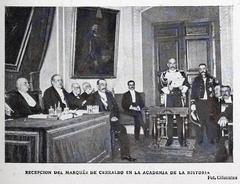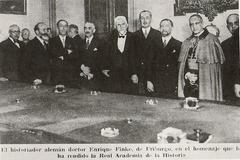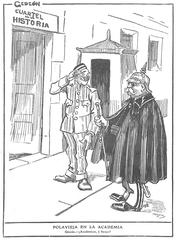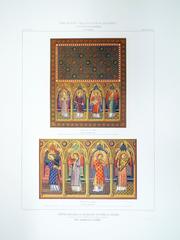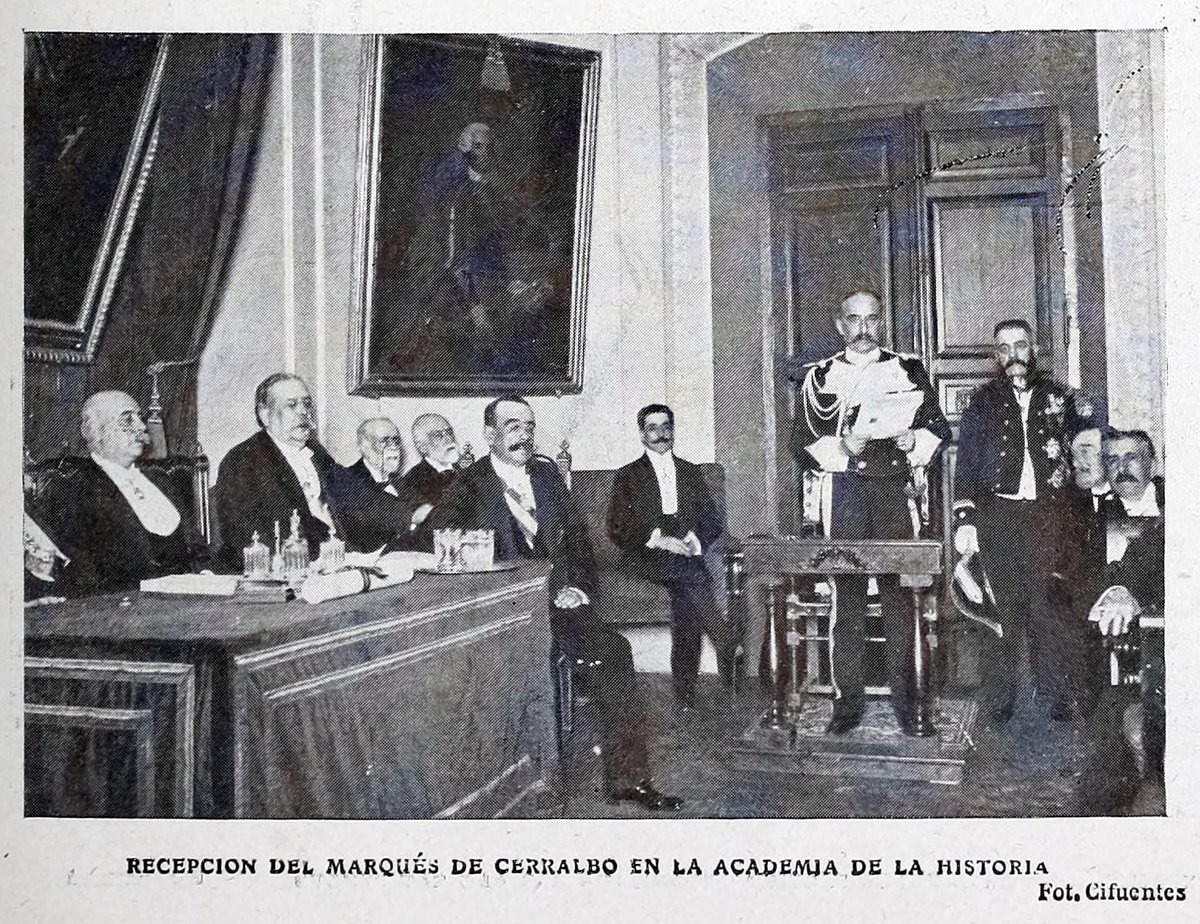
Royal Academy of History Madrid: Visiting Hours, Tickets, and Comprehensive Guide
Date: 14/06/2025
Introduction
The Royal Academy of History (Real Academia de la Historia) in Madrid stands as a pillar of Spanish scholarship and a key destination for those fascinated by the nation’s past. Founded in 1738 by royal decree of King Philip V, the Academy’s mission is the preservation, study, and dissemination of Spain’s diverse historical legacy. Occupying a striking neoclassical building in the city’s Barrio de las Letras, the Academy offers a wealth of resources, from rare manuscripts and extensive archives to curated exhibitions and public lectures. This guide provides detailed information on visiting hours, ticketing, accessibility, and tips for planning your visit, as well as insights into the Academy’s enduring significance and architectural heritage.
For official updates and visitor planning, consult the Royal Academy of History Official Website, esmadrid.com, and spain.info.
Table of Contents
- Introduction
- History and Foundation
- Scholarly Contributions and Collections
- Architectural Highlights
- Visiting Information
- Practical Visitor Tips
- Frequently Asked Questions (FAQ)
- Summary and Planning Tips
- Sources and Further Reading
History and Foundation
Established in 1738 during the Enlightenment, the Royal Academy of History was created to clarify and defend Spain’s cultural legacy, countering foreign misrepresentations and fostering national intellectual renewal. Its founding members were leading historians and scholars who set the standard for historical research, biographical studies, and the systematic documentation of Spanish monuments and dynasties (Oxford Bibliographies).
Originally housed in the Palacio del Marqués de Molins, the Academy moved to its current headquarters in the late 19th century, occupying the historic Casa del Nuevo Rezado, designed by Juan de Villanueva. The institution has played a pivotal role in shaping the understanding of Spanish identity and continues to oversee one of Spain’s most significant historical archives.
Scholarly Contributions and Collections
Academic and National Influence
The Academy’s influence extends from rigorous historical publications to the stewardship of Spain’s written and visual heritage. It has produced critical editions of texts, compiled the “Diccionario Biográfico Español”—a reference work featuring thousands of figures from Spanish history—and advised on public policy regarding heritage preservation and historical commemoration (Royal Academy of History Official Website).
Collections and Research Resources
- Library: More than 200,000 volumes focusing on Spanish and colonial history, genealogy, heraldry, and related fields.
- Manuscripts and Archives: Documents ranging from the Middle Ages to the present, including maps, plans, and rare books.
- Iconography: Engravings and visual records of Spanish monuments such as El Escorial.
Many resources are available digitally, supporting both on-site and remote research (Royal Academy of History Collections).
Architectural Highlights
Neoclassical Design
The Academy’s building, designed by Juan de Villanueva, is a model of Spanish neoclassicism. Built in 1788, it features:
- Simplicity and Proportion: Symmetrical facades, clean lines, and harmonious proportions reflecting Enlightenment ideals (e-a-a.com).
- Materials: Brick vaults for fire safety, stone facades, and minimal ornamentation.
- Historic Adaptation: Originally a storage facility for Hieronymite monks, the building was adapted for academic use in the 19th century.
Later Additions
The Academy has expanded by annexing neighboring buildings, such as the Palace of the Marquis of Molins. These expansions have respected the original architectural integrity, integrating new spaces for administration, exhibitions, and events (spain.info).
Visiting Information
Hours
- Standard Opening: Tuesday to Saturday, 10:00 AM to 5:00 PM.
- Alternative Hours: Some sources indicate Monday to Friday, 10:00 AM to 2:00 PM, or Tuesday to Sunday, 10:00 AM to 3:00 PM. Always check the official website for the latest updates, as hours may vary for special events or public holidays.
Tickets and Admission
- General Admission: Free for most exhibitions and building access.
- Special Exhibitions or Tours: May require a ticket (€5–€10). Advance booking is strongly recommended through the official ticketing page, especially during peak seasons or for guided tours.
Accessibility
- Wheelchair Access: Ramps and elevators are available, but some historic areas may have limited access. Contact the Academy before your visit for specific needs.
- Visitor Services: Cloakroom, restrooms, and a small gift shop are available on-site.
Guided Tours and Events
- Guided Tours: Offered regularly, led by expert guides. Tours are mainly in Spanish, with occasional English-language options upon request.
- Cultural Programming: Includes lectures, seminars, and temporary exhibitions. Check the events calendar for current offerings.
Location and Nearby Attractions
- Address: Calle León, 21, 28014 Madrid.
- Transport: Metro stations Antón Martín (Line 1) and Sevilla (Line 2), city buses, and nearby parking (note restrictions in central Madrid).
- Nearby Sites: Prado Museum, Thyssen-Bornemisza Museum, Royal Palace, and the vibrant Barrio de las Letras (esmadrid.com).
Practical Visitor Tips
- Reserve Early: Book tours and tickets in advance to secure your preferred date and time.
- Bring ID: Required for discounted admission or special events.
- Photography: Generally prohibited inside; check current policy for exhibitions.
- Conduct: Maintain silence and turn off mobile devices during tours or lectures.
- Duration: Allow 60–90 minutes for tours; additional time for exhibitions or events.
Frequently Asked Questions (FAQ)
Q: What are the Royal Academy of History visiting hours?
A: Typically Tuesday to Saturday, 10:00 AM to 5:00 PM, but hours can vary. Check the official website for updates.
Q: Do I need to buy tickets in advance?
A: General admission is free, but tickets are required for some events and guided tours. Book in advance online.
Q: Is the building wheelchair accessible?
A: Yes, but some historic areas may have limited access. Contact the Academy ahead of time for accommodations.
Q: Are guided tours available in English?
A: Most tours are in Spanish; English tours may be available upon request.
Q: Can I take photographs inside?
A: Photography is typically prohibited inside to protect collections.
Q: Are there public events or lectures?
A: Yes, the Academy hosts lectures and cultural events throughout the year. See the events calendar.
Summary and Planning Tips
The Royal Academy of History is a must-visit for anyone interested in Spain’s history, architecture, and scholarly tradition. With its central location, free general admission, guided tours, and educational programs, the Academy ensures a rewarding experience for visitors. Plan ahead by checking the latest visiting hours and booking tickets in advance, especially for tours or special events. Enhance your visit by exploring the surrounding Barrio de las Letras and nearby Madrid historical sites.
For immersive experiences, digital resources, and audio guides, consider downloading cultural apps such as Audiala.
Sources and Further Reading
- Royal Academy of History Official Website
- esmadrid.com – Royal Academy of History Tourist Information
- Spain.info – Royal Academy of History
- Oxford Bibliographies – Royal Academy of History
- e-a-a.com – Best Architectural Buildings in Madrid
- The Crazy Tourist – Best Things to Do in Madrid
